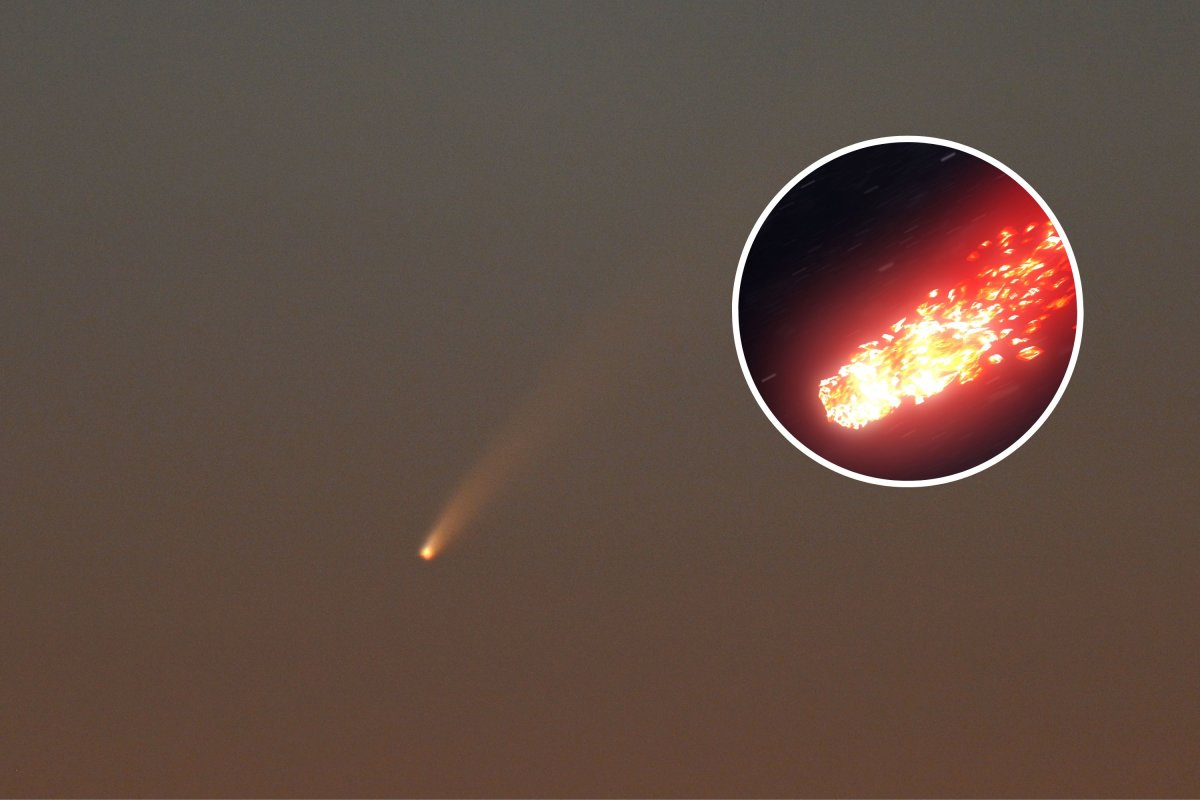The brightest comet of the year, which has been lighting up the sky over the past week, may be in the process of breaking apart.
The comet, named Comet ATLAS (C/2024 G3), skirted three times closer to the sun than Mercury on January 13, and has been shining bright enough to be visible to the naked eye in the days since.
However, according to astronomers, the comet might be disintegrating, becoming a "headless wonder".

After snapping some pictures of the comet, Hungarian astronomer Lionel Majzik spotted that the head of the comet was no longer the comet's brightest part, and a streamer had appeared on its side, according to spaceweather.com.
This indicates that the nucleus of the comet might be in the process of crumbling into pieces.
Comet ATLAS (C/2024 G3) came within 8.3 million miles of the sun on January 13, reaching the perihelion of its massive, 160,000-year orbit through our solar system. The comet was only first discovered on April 5 last year by the Asteroid Terrestrial-impact Last Alert System (ATLAS) survey.
"Preliminary orbital calculations suggest this is likely a long-period comet, potentially taking thousands of years between solar system visits," Shyam Balaji, astroparticle physics and cosmology researcher at King's College London, told Newsweek.
The comet reached a maximum brightness of magnitude -3.4 during its perihelion, meaning it was just shy of the brightness of Venus—the brightest celestial object in our skies barring the sun and moon.
Comet ATLAS (C/2024 G3) survived its close call with the sun despite fears that it would disintegrate during its perihelion, due to intense heat, gravitational forces and solar radiation.
When a comet approaches the sun, the heat causes the ice in its nucleus to transition directly from a solid state to gas (known as sublimation), which can weaken the structural integrity of the comet, causing it to fragment.
The nucleus also experiences extreme temperature changes as it rotates, with one side facing the Sun and the other in shadow, which can lead to cracks and eventual disintegration.
The observed gas streaming from the comet's nucleus indicates that, despite its survival until now, the comet may finally be succumbing to the thermal stresses it experienced closer to the sun.
This is similar to how Comet Lovejoy (C/2011 W3) disintegrated in 2011, which survived its journey a mere 87,000 miles above the sun's surface, but fell apart a few days later.
Do you have a tip on a science story that Newsweek should be covering? Do you have a question about comets? Let us know via science@newsweek.com.



















 English (US) ·
English (US) ·